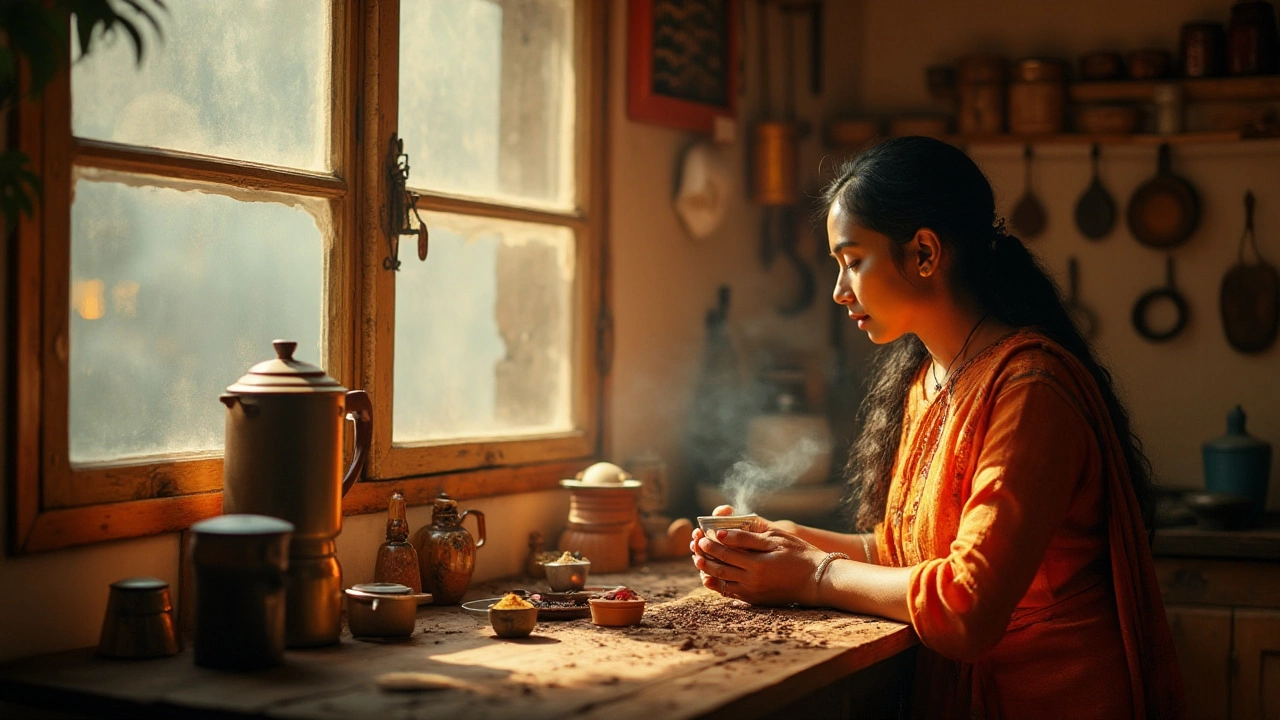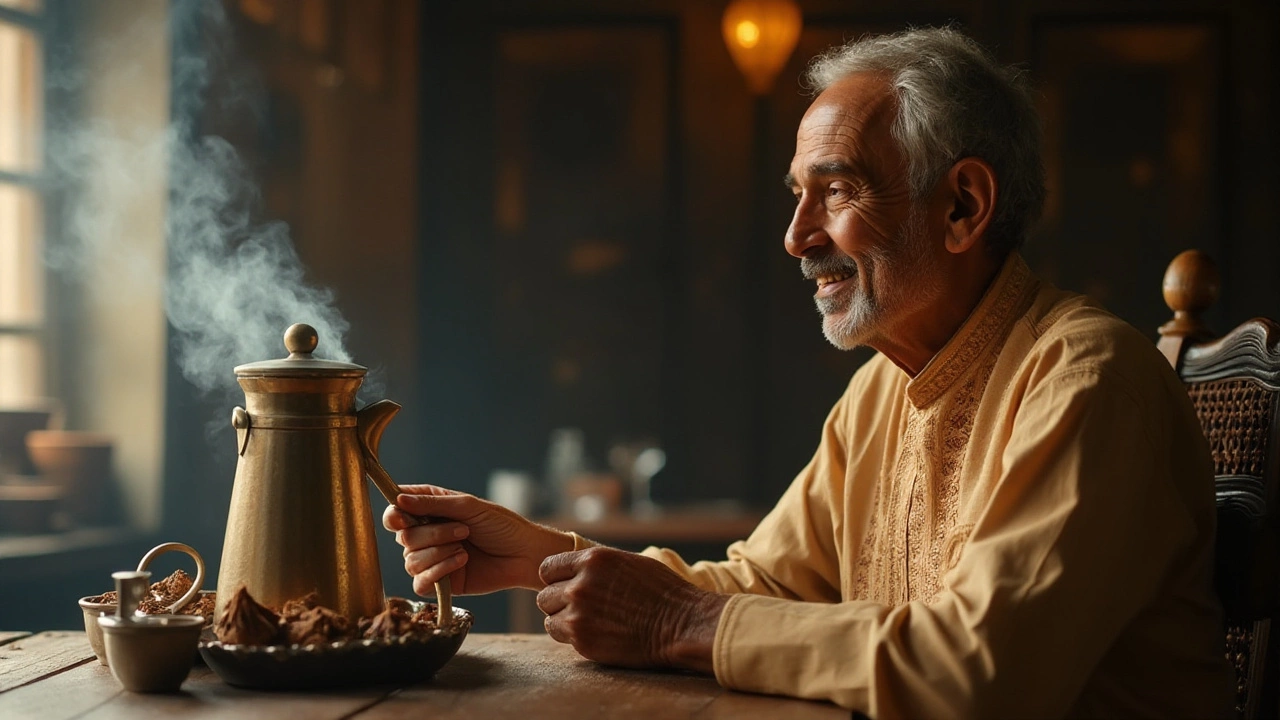
For many coffee aficionados, the word 'percolator' evokes images of steaming pots on a campfire or memories of watching grandparents brew their morning coffee. While these gadgets hold a certain timeless appeal, they also come with a set of challenges modern coffee lovers ought to consider.
As we delve into the less celebrated aspects of percolators, we'll explore how the brewing process can lead to inconsistent flavors, why these machines might demand a bit of patience to perfect, and how keeping them in good condition can sometimes feel like a chore.
Whether you're a seasoned coffee drinker looking to experiment or a newcomer exploring different brewing options, understanding the potential downsides of percolators can guide you on your quest for the perfect cup.
- Introduction to Percolators
- Fluctuations in Coffee Quality
- Challenges in Mastering the Brewing Process
- Maintenance and Storage Concerns
- Are Percolators Worth the Troubles?
Introduction to Percolators
Percolators, those quintessential brewing devices, have been an integral part of coffee-making history. Their origins date back to the 19th century, designed initially to brew coffee over stovetops. At first glance, percolators might seem straightforward, but their journey through time tells a saga of ingenuity and adaptability. In its basic form, a percolator consists of a pot, a small chamber at the bottom, and a vertical tube leading to the top. Water is heated to boiling, creating bubbles that travel up the tube and trickle through the ground coffee brewing methods. This process repeats until the coffee reaches a desirable strength.
Despite the simplicity of its operation, percolators hold a reputation for producing a richly aromatic brew, often favored by those who appreciate a bold flavor. However, not all percolators are created equal. Some are electric, which caters to the convenience of modern households, while others remain traditional. Each type serves its unique audience, often impacting the taste and quality output. The charm of percolators largely lies in the nostalgia they evoke, reminiscent of family gatherings or camping trips where coffee was more than just a beverage—it was an experience.
"Percolators have a mystique about them. They remind us of simpler times, yet challenge us to perfect a brewing art that is distinctly their own." — Coffee Aficionado Magazine
Even though advanced coffee makers now dominate market shelves, percolators continue to uphold their presence, notably among those who esteem a holistic coffee experience. Interestingly, a survey highlighted that about 12% of regular coffee drinkers in the UK still consider percolators their go-to method. This affinity is majorly attributed to the robustness and depth in flavor percolators can impart, something many believe modern machines lack. For those unacquainted with its use, the appeal and art of percolation might incite curiosity, making it an intriguing option among various coffee machine insights.
Moreover, percolators' manufacture has seen some interesting shifts. Modern designs often include features enhancing safety and precision, such as thermostats and automated heat controls. Additionally, the materials have evolved from aluminum to stainless steel or even glass, enhancing both durability and aesthetic allure. Despite changes, the core philosophy remains unchanged—a testament to a blend of functionality and tradition. It’s essential to recognize that embracing a percolator isn’t just a matter of choosing a coffee maker; it’s about honoring a tradition and indulging in its vintage charm while appreciating the rich tapestry it continues to weave in homes around the world.
Fluctuations in Coffee Quality
For those who are meticulous about their coffee, the quest for consistency is never-ending. Enter the percolator, a device known for its strength but not always for stability in flavor. The intriguing peculiarity of a percolator is that during the brewing process, water is cycled repeatedly over coffee grounds. This repetitive exposure raises a critical issue: the risk of over-extraction. Coffee brewed this way can suddenly swing from an aromatic delight to an acrid, bitter disappointment if timing is not meticulous. Such a method is distinct from more controlled processes like drip coffee makers, where water passes through the grounds only once, ensuring a balance in extraction.
One reason the coffee quality can vary is the lack of control over variables such as water temperature. Percolators typically heat water until it boils, which is a significant delta from the optimal brewing temperature of 195 to 205 degrees Fahrenheit. Boiling can damage the delicate compounds in coffee, leading to a product that lacks nuance. A coffee drinker may notice that the same beans, when brewed with a percolator, don't express the same flavors and complexity as they would with a pour-over or French press.
To achieve the best from a percolator, a user may have to delve into the art and science of brewing. They can monitor the brewing time and experiment with the proportion of water and coffee grounds, but the process can feel more akin to crafting an alchemical elixir than simply making a morning cup. This brings us to a quote by specialty coffee enthusiast James Hoffman, who states, "The challenge of making good coffee is understanding how to manage variables in your favor."
"The challenge of making good coffee is understanding how to manage variables in your favor." - James Hoffman
Circumventing Inconsistency
For those determined to excel with a percolator, being aware of these fluctuations in quality is half the battle. Crafting the perfect cup demands diligence. Some coffee users recommend using coarser grounds, which are less susceptible to the risk of over-extraction, or alternatively, reducing the brew time. There’s also the question of water quality; using filtered water can also impact the quality of the brew, as impurities can become pronounced when heated to boiling point. Another engaging method is pre-heating the water before pouring it into the percolator’s reservoir, minimizing the time grounds are subjected to excessive heat.
Percolators do reward patience with their bold flavors and nostalgic charm. A seasoned coffee enthusiast might view these contraptions less as a reliable routine choice and more of an occasional adventure into a different method of brewing. And despite the limitations, the community of devoted percolator users remains strong, each cup a testament to the art of observation and experimentation.

Challenges in Mastering the Brewing Process
For those who have grown accustomed to the predictability of modern coffee makers, the hands-on experience that percolators offer can be quite different. Percolator disadvantages begin with the complexity of achieving the perfect brew. Unlike machines that automate the process, percolators require a keen eye and constant attention. Striking the right balance between time, temperature, and coffee grind size can feel like walking a tightrope. With percolators, it’s all too easy to find yourself waiting anxiously over the pot, hoping you don’t end up with a cup that's either too weak or overwhelmingly bitter. The art of percolating coffee relies heavily on the cycle of heated water circulating through the grounds continuously. This method harbors the risk of over-extraction, where the resulting brew can possess a bitter, almost burnt taste if left unattended even for a few seconds too long. To achieve optimal flavor, many enthusiasts recommend timing the brew cycle carefully, often suggesting a sweet spot of around six to eight minutes.
When learning to master the art of percolation, even the most minute changes in grind size can drastically alter the taste and strength of the final cup. A coarser grind is often preferred, but finding the perfect consistency requires a skillful touch. According to James Hoffmann, a renowned figure in the coffee industry, "The percolator's primary quirk is replicating specific results since slight modifications can lead to a fundamentally different result."
It's akin to a chef adjusting spices without a recipe, with each brew session serving as an experimental cooking class.Fans of percolators also suggest pre-heating the water before adding it to the pot, which minimizes the time coffee grounds are heated excessively. While mastering these variables may take practice, the payoff for many is a consistently bold and flavorful cup of coffee.
Yet, let's not forget that the learning curve of percolators presents an opportunity for experimentation. The first few attempts may be challenging, but soon the process becomes a ritual, inviting a more mindful approach to brewing. Now, while precision and patience are integral for success with percolators, newbies often find themselves diving deep into the support of coffee communities. Engaging with fellow enthusiasts online or in coffee meet-ups can uncover tips, tricks, and shared experiences, providing guidance for those who find the process somewhat daunting initially. For individuals who relish the precision of crafting a perfect brew, learning to navigate these percolator challenges can be a rewarding endeavor. The knowledge gained along the way merges the timeless charm of traditional techniques with modern insights, resulting in a truly unique coffee experience.
Maintenance and Storage Concerns
For those who treasure their percolators, keeping them in tip-top shape is not just an occasional task but a regular ritual. Unlike modern coffee makers, a percolator often requires more hands-on attention. The intricacies of its design, with various parts such as the basket, spreader, and tube, mean that it's vital to ensure each component is clean and free from any coffee residue. Neglecting this may lead to build-up which not only affects the taste but could potentially damage the unit over time.
One often overlooked aspect of maintaining a percolator is the accumulation of hard water deposits, particularly in areas with mineral-rich water. It's advisable to descale the appliance periodically using vinegar or a specialized descaling solution found at most household stores. However, this process shouldn't be rushed. Each part should be thoroughly rinsed to avoid any lingering taste of cleaning agents. Storing the percolator properly when not in use is another step to prolong its life. Ideally, it should be kept in a dry place, as moisture can lead to the dreaded corrosion, especially for vintage models.
It’s key to factor in the space the percolator might occupy. Unlike more compact coffee machines, these can be quite bulky and may require dedicated shelf space in your kitchen. Efficient storage solutions, like modular kitchen shelves or dedicated cabinets, can help organize your gear. This, in turn, ensures your kitchen remains clutter-free, enhancing not just the aesthetic but also the functionality of your cooking space.
Interestingly, a few aficionados consider the complex maintenance part of their daily coffee ritual, rather than a mere chore. According to a popular coffee blog, "For some, the meticulous cleaning of a percolator becomes a therapeutic exercise, a way to connect with the timeless art of coffee-making."
Moving forward, recording the frequency of cleaning sessions and noting any peculiar changes in operation can be beneficial. This not only improves the longevity of your beloved coffee brewing methods but also ensures every cup brewed is consistent in flavor and full of rich aroma. Thus, while a percolator might demand a bit more attention than its automated counterparts, the rewards could potentially outweigh the extra effort.

Are Percolators Worth the Troubles?
When considering whether percolators are worth the potential hassles they bring, it's essential to weigh both their unique charm and significant drawbacks. Percolators have been a part of coffee culture for many years, often appreciated for their simplicity and ability to brew a strong cup of coffee with rich flavors. However, they are prone to over-extracting coffee, leading to bitterness that some might find off-putting. This happens because the same water circulates through the coffee grounds multiple times, a process that requires careful timing and attention to avoid unwanted flavors.
The learning curve associated with these devices can be a barrier for new users. Mastering the art of brewing with a percolator involves understanding how to control the heat and timing precisely. For those who love experimenting, this might be part of the appeal, but it's certainly not for everyone. Modern coffee machines often offer more straightforward, automated brewing options that might be more suitable for someone with a hectic schedule.
Maintenance is another aspect worth considering. Unlike several coffee machine alternatives, percolators can be cumbersome to clean since they often require manual scrubbing to reach all the nooks and crannies where coffee residue accumulates. Additionally, their relatively large size makes them less appealing for those with limited kitchen space. These factors can deter those who prioritize convenience and minimal cleanup.
Nonetheless, the nostalgic element of using a percolator cannot be discounted. For many, it's not just about brewing coffee; it's about the ritual. The rhythmic bubbling sound, the wafting aroma, and the anticipation of that first sip can offer a form of mindfulness and relaxation—a counterpoint to the fast-paced nature of automatic machines. As the notable coffee expert James Hoffmann once stated, "There’s something to be said for taking the time to brew a truly hands-on cup of coffee that reflects crafting a moment as much as crafting a beverage."
When evaluating percolators, another factor to ponder is their affordability. Though high-end models are available, they remain one of the more economical options among coffee brewing devices. If you cherish a no-frills approach to coffee brewing methods and enjoy the tactile involvement, a percolator could very well be a worthwhile investment. For those willing to accept its quirks as part of its charm, it offers a unique experience in the sprawling world of coffee culture.
In summary, while percolators do come with several challenges, their appeal depends largely on personal preferences, lifestyle choices, and the value placed on the nostalgic or artisanal aspect of crafting coffee. With a willingness to embrace their peculiarities and some patience in the learning process, for some, percolators indeed prove themselves more than just relics of a bygone era.